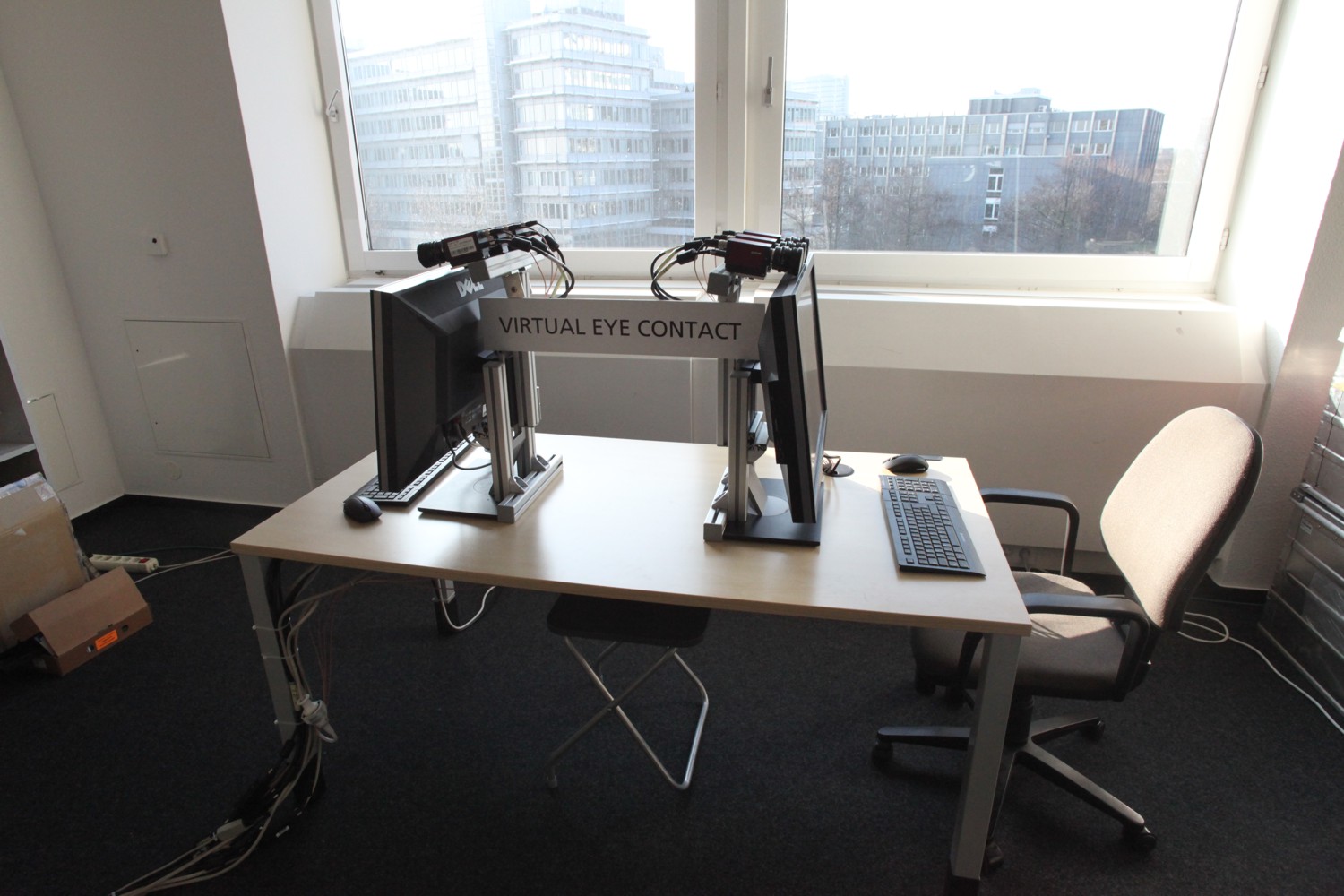Eye contact is one of the most important elements of non-verbal communication
The Fraunhofer Heinrich Hertz Institute in Berlin has made a breakthrough in direct eye to eye contact for video conferencing via a software module and two or three cameras. It is the result of years of research and the Fraunhofer HHI expect it to be implemented into consumer laptops.
As anyone who has used video conferencing applications will know, there is always the problem that each party is looking down to see the other party. Eye contact is one of the most important elements of non-verbal communication and without this, each person can feel slightly disconnected from the conversation (how many of you have given up and reverted to audio only?!?).
High tech R&D firm Fraunhofer Heninrich Hertz Institute in Berlin, Germany showed 3D Focus their latest work in solving this problem during the recent Future of 3D Media Day. Called the Virtual Eye Contact Engine, the software module analyses the scene in real-time 3D from three cameras mounted around the display. It computes the depth structure information of the person’s head which is used to generate a 3D model. The 3D model is then used to compute the view of the virtual camera for both parties and the rendered output appears to show each person looking directly at each other.
Such technology requires high quality video processing at high resolution but the Fraunhofer Heinrich Hertz Institute claim to have achieved real-time processing with low delay, HD image resolution and high quality rendered views.
The system could even work with two cameras making it more viable as a commercial product. The optimal number of cameras depends on the final application scenario and the expected quality. For example, the distance between the user and screen as well as the size of the screen influences the choice of the camera setup. The desktop prototype system shown to 3D Focus provides high quality HD virtual eye contact using three cameras instead of two as a third camera increases the quality and robustness.
The Virtual Eye Contact Engine was first shown at the 3D Stereo Media Summit in 2010 but has been considerably improved since then including the creation of the desktop prototype version (as shown by the pictures).
Ingo Feldman, Scientific Project Manager 3D Video & Immersive Media Group, told 3D Focus that he expects the solution to be commercialised, “We are working on a product release for our system. We expect the first version on the market in about one year’s time, i.e. autumn of 2012. We have two market segments. On one hand we plan to provide an office desktop system with high quality virtual eye contact correction. On the other hand, we plan a consumer market solution which is capable to run on laptop environments. As we are a research institution, we are always interested in industry partners which will finance our product development.”








